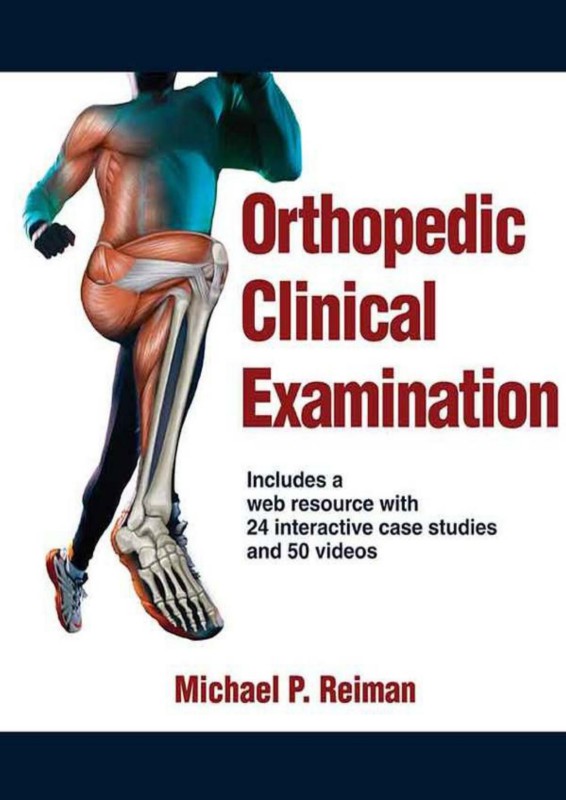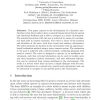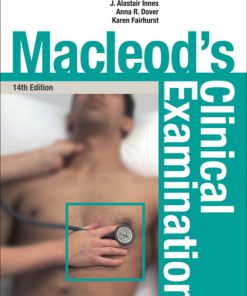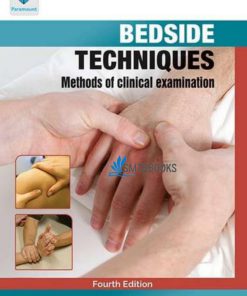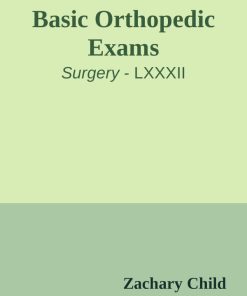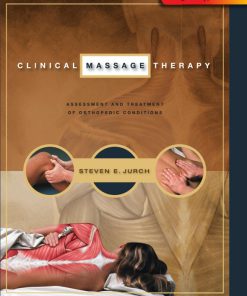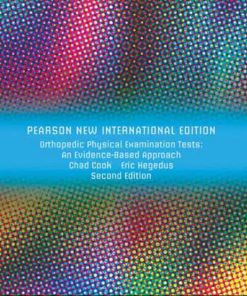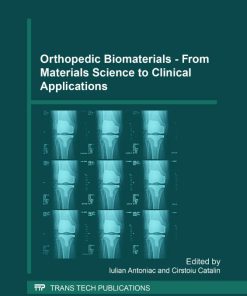Orthopedic Clinical Examination 1st Edition by Michael Reiman ISBN 1450459943 9781450459945
$50.00 Original price was: $50.00.$25.00Current price is: $25.00.
Authors:Michael Reiman , Series:Surgery [68] , Tags:Rheumatology; Physical Therapy; Health; Fitness & Dieting , Author sort:Reiman, Michael , Ids:9781492507413 , Languages:Languages:eng , Published:Published:Mar 2016 , Publisher:Human Kinetics , Comments:Comments:Orthopedic Clinical Examination With Web Resourceprovides readers with fundamental knowledge for developing proficiency at performing systematic orthopedic evaluations. Michael P. Reiman, who is internationally respected for his teaching, clinical practice, and research focused on orthopedic assessment and treatment methods, presents an evidence-based guide on the examination process for various parts of the body.
Orthopedic Clinical Examination 1st Edition by Michael Reiman – Ebook PDF Instant Download/Delivery. 1450459943 ,9781450459945
Full download Orthopedic Clinical Examination 1st Edition after payment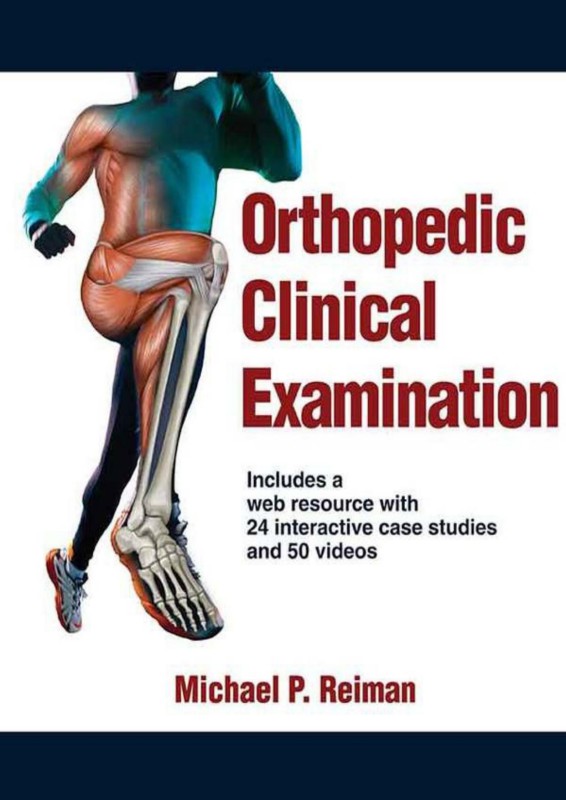
Product details:
ISBN 10: 1450459943
ISBN 13: 9781450459945
Author: Michael Reiman
Orthopedic Clinical Examination With Web Resource provides readers with fundamental knowledge for developing proficiency at performing systematic orthopedic evaluations. Michael P. Reiman, who is internationally respected for his teaching, clinical practice, and research focused on orthopedic assessment and treatment methods, presents an evidence-based guide on the examination process for various parts of the body.
The text takes a structured approach, moving from broad to focused, that guides clinicians in examining each client and condition. The text presents specific components of the examination in the same sequence, ensuring repetition and improved consistency in learning. Screenings are used early in the examination sequence not only to determine the appropriateness of performing an orthopedic examination but also to rule out other potential pain generators and thereby narrow the focus of the examination.
Orthopedic Clinical Examination emphasizes evidence-based practice and therefore focuses on tests that are clinically relevant, providing students and clinicians with the most appropriate testing options rather than listing tests with no regard for their clinical value. Both treatment-based and pathological-based diagnostic styles are covered in detail so that readers will gain a thorough understanding of both approaches and be able to implement them separately or in tandem. In addition to musculoskeletal testing, the text provides information on including subjective history, observation, diagnostic imaging, systems and neurological screening, and performance-based measures in each examination.
The text is organized into five parts and is structured such that readers will first acquire requisite knowledge about anatomy and the examination process before advancing to acquiring specific examination skills. Part I presents information about the musculoskeletal and nervous systems as well as tissue behavior and healing. Part II introduces the principles of the examination sequence. Parts III and IV present the region-specific examination sequence for evaluating clients, including specifics on analyzing the head, spine, and extremities. Each chapter in these two parts covers the anatomy of the region, various types of injuries that occur, specific tests and measures that can be used, and cross-references to specific case studies for further review. Part V highlights additional considerations that may be necessary for special populations during the examination process.
Orthopedic Clinical Examination includes learning tools that enhance comprehension and engagement:
• Full-color photographs and illustrations demonstrate anatomy, patient conditions, and clinician positioning to serve as a visual reference and ensure proper testing techniques.
• A library of 50 videos, found in the web resource, provides students with visual demonstrations of assessments and treatments.
• Color-coding graphics throughout chapters help readers quickly discern whether evidence supporting the reported finding is ideal, good, or less than good.
• Overviews of common orthopedic conditions for each body region are in the 12 applied chapters.
• Twenty-four case studies guide users in the proper questions to ask and steps to take in conducting examinations.
• Linkss to abstracts of articles provide additional clinical learning scenarios.
With Orthopedic Clinical Examination, current and future clinicians will gain the knowledge and confidence they need in performing examinations to provide optimal patient care.
Orthopedic Clinical Examination 1st Edition Table of contents:
Chapter 1: Introduction to Orthopedic Examination
- Principles of Orthopedic Examination
- History Taking in Orthopedic Practice
- Clinical Reasoning and Diagnosis
- The Role of Orthopedic Tests in Clinical Decision-Making
- General Approach to the Musculoskeletal Exam
Chapter 2: Examination of the Spine
- Posture and Alignment Assessment
- Inspection and Palpation of the Spine
- Range of Motion (ROM) Testing in the Spine
- Neurological Screening for Spinal Conditions
- Special Tests for the Cervical Spine
- Special Tests for the Thoracolumbar Spine
- Examination for Spinal Instability and Red Flags
- Spinal Pain and its Differentiation: Mechanical vs. Non-mechanical
Chapter 3: Examination of the Shoulder
- Inspection and Palpation of the Shoulder Complex
- Range of Motion Testing in the Shoulder
- Special Tests for Rotator Cuff Pathology
- Special Tests for Shoulder Instability
- Tests for Labral Pathology and SLAP Lesions
- Impingement Syndrome: Clinical Examination Findings
- Neurological and Vascular Screening in the Shoulder
- Differential Diagnosis of Shoulder Pain
Chapter 4: Examination of the Elbow
- Inspection and Palpation of the Elbow Joint
- Range of Motion Testing in the Elbow
- Special Tests for Lateral Epicondylitis (Tennis Elbow)
- Special Tests for Medial Epicondylitis (Golfer’s Elbow)
- Tests for Elbow Instability and Ligamentous Injury
- Neurological and Vascular Screening in the Elbow
- Differential Diagnosis of Elbow Pain
Chapter 5: Examination of the Wrist and Hand
- Inspection and Palpation of the Wrist and Hand
- Range of Motion Testing for the Wrist
- Special Tests for Carpal Tunnel Syndrome
- Special Tests for De Quervain’s Tenosynovitis
- Tests for Thumb and Finger Ligament Injuries
- Neurological and Vascular Screening for the Upper Extremity
- Differential Diagnosis of Wrist and Hand Pain
Chapter 6: Examination of the Hip
- Inspection and Palpation of the Hip Joint
- Range of Motion Testing for the Hip
- Special Tests for Hip Labral Tears
- Tests for Hip Impingement (FAI)
- Tests for Hip Instability and Ligamentous Injury
- Neurological and Vascular Screening of the Hip
- Differential Diagnosis of Hip Pain
Chapter 7: Examination of the Knee
- Inspection and Palpation of the Knee Joint
- Range of Motion Testing for the Knee
- Special Tests for Anterior Cruciate Ligament (ACL) Injury
- Special Tests for Posterior Cruciate Ligament (PCL) Injury
- Special Tests for Meniscal Pathology
- Tests for Patellofemoral Pain Syndrome
- Examination for Knee Instability and Ligamentous Injury
- Neurological and Vascular Screening of the Knee
- Differential Diagnosis of Knee Pain
Chapter 8: Examination of the Ankle and Foot
- Inspection and Palpation of the Ankle and Foot
- Range of Motion Testing for the Ankle and Foot
- Special Tests for Ankle Sprains and Ligamentous Injury
- Tests for Achilles Tendon Pathology
- Special Tests for Plantar Fasciitis and Heel Pain
- Special Tests for Flatfoot and High Arches
- Neurological and Vascular Screening of the Lower Extremity
- Differential Diagnosis of Foot and Ankle Pain
Chapter 9: Examination of the Pediatric Patient
- Growth and Developmental Considerations
- Pediatric Musculoskeletal Exam Techniques
- Common Pediatric Orthopedic Conditions: Fractures, Dislocations, and Congenital Conditions
- Special Tests for Pediatric Hip Dysplasia
- Screening for Scoliosis in Children
- Managing Pain and Anxiety in Pediatric Patients
Chapter 10: Examination of the Geriatric Patient
- Considerations for Older Adults in Orthopedic Examination
- Age-Related Changes in the Musculoskeletal System
- Screening for Osteoporosis and Fracture Risk
- Joint Degeneration and Mobility Assessment
- Special Tests in the Geriatric Population
- Multidisciplinary Approach to Geriatric Orthopedic Care
Chapter 11: Neurovascular Examination in Orthopedics
- Principles of Neurovascular Examination
- Sensory, Motor, and Reflex Testing in Orthopedic Practice
- Screening for Peripheral Nerve Injuries
- Evaluation of Radiculopathies and Peripheral Neuropathies
- Vascular Assessment: Arterial and Venous Systems
- Neurovascular Red Flags in Orthopedic Examination
Chapter 12: Special Techniques and Emerging Tools in Orthopedic Examination
- Diagnostic Ultrasound in Orthopedic Practice
- Role of Dynamic Testing in Orthopedic Diagnosis
- Functional Movement Screening and Assessment Tools
- Use of Imaging in Clinical Orthopedic Examination
- Evidence-Based Approaches to Orthopedic Testing
Chapter 13: Case Studies and Clinical Applications
- Case Study 1: Shoulder Pain and Instability
- Case Study 2: Knee Injury in an Athlete
- Case Study 3: Low Back Pain and Radiculopathy
- Case Study 4: Hip Pain in the Elderly
- Case Study 5: Foot and Ankle Injury Evaluation
- Applying Clinical Examination Findings to Treatment Decisions
People also search for Orthopedic Clinical Examination 1st Edition:
netter orthopedic clinical examination pdf
reiman orthopedic clinical examination
orthopedic clinical examination pdf
orthopedic clinical examination reiman pdf
You may also like…
eBook PDF
Clinical Epidemiology of Orthopedic Trauma 1st Edition by Yingze Zhang ISBN 9783131660411 3131660414

